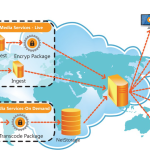
Adapting to the New Normal: Mobile RTB Trends in a Post-Pandemic World
- Post
- August 8, 2023
- Ad Serving Tech, Mobile RTB, Real-time Bidding
- 0 Comments
The landscape of digital advertising has undergone a profound transformation in the wake of the global pandemic. As businesses pivoted towards virtual operations, the mobile Real-Time Bidding (RTB) ecosystem witnessed a significant shift. In this blog, we delve into the dynamic Mobile RTB trends that are shaping the post-pandemic advertising realm. As a proficient SEO and Copywriter, we bring you a comprehensive analysis of how the new normal has influenced the mobile RTB landscape and how businesses can harness these trends for their advantage.
Evolution of Mobile RTB: A Paradigm Shift
In the aftermath of the pandemic, the already burgeoning mobile RTB domain experienced a paradigm shift. Advertisers and marketers quickly recognized the need to redefine their strategies to adapt to changing consumer behaviors and preferences. The Mobile RTB landscape, known for its agility and precision, emerged as a key player in delivering tailored ads to a more diverse and engaged audience.
Data-Driven Insights: The Powerhouse Behind Effective Targeting
Data-driven insights have become the cornerstone of effective mobile RTB strategies. Advertisers are now leveraging advanced analytics to decode user behavior patterns, enabling them to create highly personalized ad experiences. With the ability to track user interactions, preferences, and purchasing trends, brands can craft targeted campaigns that resonate with individual users.
Contextual Advertising Takes Center Stage
Contextual advertising, long considered a reliable strategy, has found renewed relevance in the post-pandemic world. As users became more discerning about the content they engage with, advertisers turned to contextually relevant placements to enhance user experience. This shift highlights the importance of aligning ad content with the surrounding context to capture user attention effectively.
Rise of Mobile Video Advertising
Video advertising on mobile devices has experienced exponential growth, with users increasingly consuming content through videos. This trend has prompted advertisers to allocate a significant portion of their budgets to mobile video ads. Engaging and immersive video formats have proven to be highly effective in conveying brand messages and fostering connections with the audience.
Privacy-First Approach: Navigating the Data Landscape
The evolving data privacy regulations and user concerns about data security have propelled the adoption of a privacy-first approach. Advertisers are embracing technologies like federated learning and differential privacy to glean insights without compromising user privacy. This ethical stance not only builds user trust but also ensures long-term sustainability in the mobile RTB ecosystem.
The Integration of AI and Machine Learning
Artificial Intelligence (AI) and Machine Learning (ML) are revolutionizing mobile RTB strategies. These technologies empower advertisers to predict user behavior, optimize ad placements, and deliver hyper-personalized content. AI-powered algorithms analyze vast datasets in real-time, enabling advertisers to make informed decisions that maximize campaign effectiveness.
Seamless Cross-Channel Engagement
The post-pandemic consumer is seamlessly transitioning across devices and channels. As a result, mobile RTB strategies are embracing cross-channel integration to deliver cohesive and consistent messaging. This unified approach ensures that users encounter a seamless brand experience regardless of the device they are using.
Agility and Flexibility in Ad Campaigns
The pandemic’s uncertainty underscored the importance of agility in ad campaigns. Advertisers are adopting flexible strategies that allow rapid adjustments in response to dynamic market conditions. The ability to pivot quickly and capitalize on emerging trends has become a hallmark of successful mobile RTB campaigns.
Localization and Hyper-Local Targeting
As physical interactions reduced, hyper-local targeting gained prominence. Advertisers are using geolocation data to deliver location-specific ads that cater to users’ immediate surroundings. This approach enhances relevance and engagement, enabling brands to connect with users on a more personal level.
Crafting a Post-Pandemic Mobile RTB Strategy
In the post-pandemic world, crafting a successful mobile RTB strategy requires a holistic approach. Brands need to combine data-driven insights, privacy-conscious practices, and dynamic content formats to create campaigns that resonate with the evolving consumer mindset. By harnessing the power of mobile RTB trends, businesses can navigate the new normal and forge meaningful connections with their audiences.
Final Words
The post-pandemic era has ushered in a new era of possibilities for mobile RTB strategies. The convergence of data insights, AI, privacy considerations, and seamless cross-channel engagement presents advertisers with unprecedented opportunities to thrive in a rapidly evolving landscape. As the world continues to adapt, embracing these trends will be key to unlocking the full potential of mobile RTB in the new normal.
Commonly Asked Questions
Q1: How has the pandemic impacted mobile RTB?
The pandemic has reshaped mobile RTB strategies, emphasizing data-driven insights, privacy-first approaches, and agility in campaign management. Advertisers are leveraging trends such as contextual advertising, mobile video, and AI integration to connect with users effectively.
Q2: What role does data play in mobile RTB?
Data-driven insights are the backbone of effective mobile RTB strategies. By analyzing user behavior patterns, advertisers can create highly personalized ad experiences that resonate with individual users, leading to higher engagement and conversion rates.
Q3: How does AI contribute to mobile RTB success?
Artificial Intelligence (AI) empowers advertisers to predict user behavior, optimize ad placements, and deliver hyper-personalized content. AI-powered algorithms analyze real-time data, enabling advertisers to make informed decisions that maximize campaign effectiveness.
Q4: What is the significance of cross-channel engagement in mobile RTB?
Cross-channel engagement ensures that users encounter a consistent brand experience across different devices and platforms. This unified approach enhances brand recall and user engagement, fostering stronger connections with the audience.
Q5: How can businesses adapt to the new normal using mobile RTB?
To adapt to the new normal, businesses should embrace trends like contextual advertising, hyper-local targeting, and flexible campaign strategies. By aligning their mobile RTB strategies with evolving consumer behaviors, brands can forge meaningful connections and thrive in the post-pandemic world.




